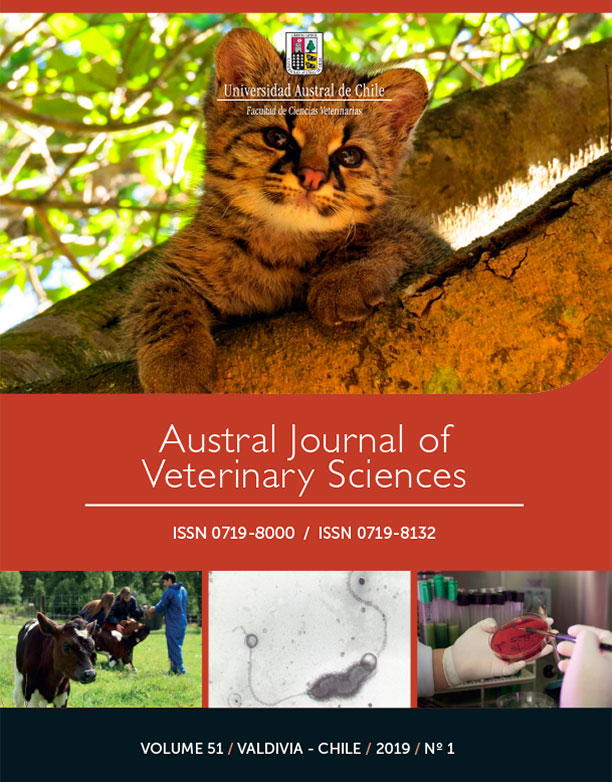Prevalence, risk factors, and identification of Salmonella spp. in stray dogs of northwest Mexico
Contenido principal del artículo
Resumen
Salmonellosis has a worldwide relevance in aspects associated with public health, as only in 2009 were reported 93.8 million cases in humans. The objective of the study was to establish the prevalence, risk factors and bacteriological and molecular identification of Salmonella spp in stray dogs in urban, rural and coastal areas of Mexicali, a city in northwest Mexico. From May 2014 to February 2015, 385 dogs were tested. Sampling was performed by rectal swab and conventional bacteriological techniques were applied, for later implementation of the API 20E system and molecular identification by polymerase chain reaction (PCR). The data were analysed statistically by means of descriptive statistics and multiple logistic regression modelling. A prevalence of 6.27% was obtained in the dogs examined, the samples obtained were characterised to subspecies (Salmonella enterica subspecies enterica and Salmonella enterica subspecie arizonae). The geographical region with the highest prevalence in the study was the coast (10%), followed by the rural area (8.57%) and the urban area (5.8%), however, no significant statistical differences were detected. There was significant difference in the prevalence by age of dogs under one year (P<0.05). The identification of Salmonella in dogs from northwest Mexico could correspond to serovars of zoonotic importance indicating a potential risk for the population.

